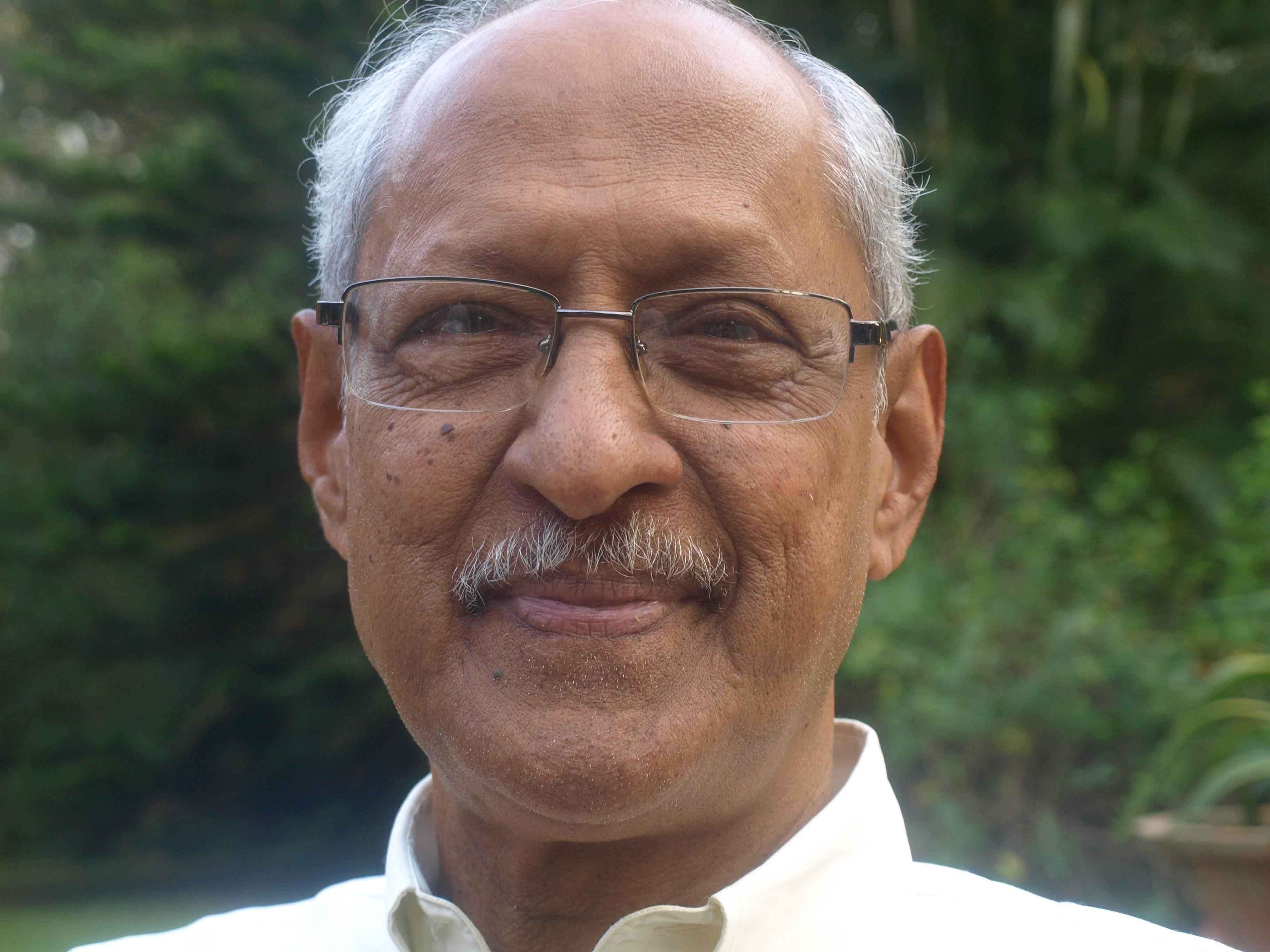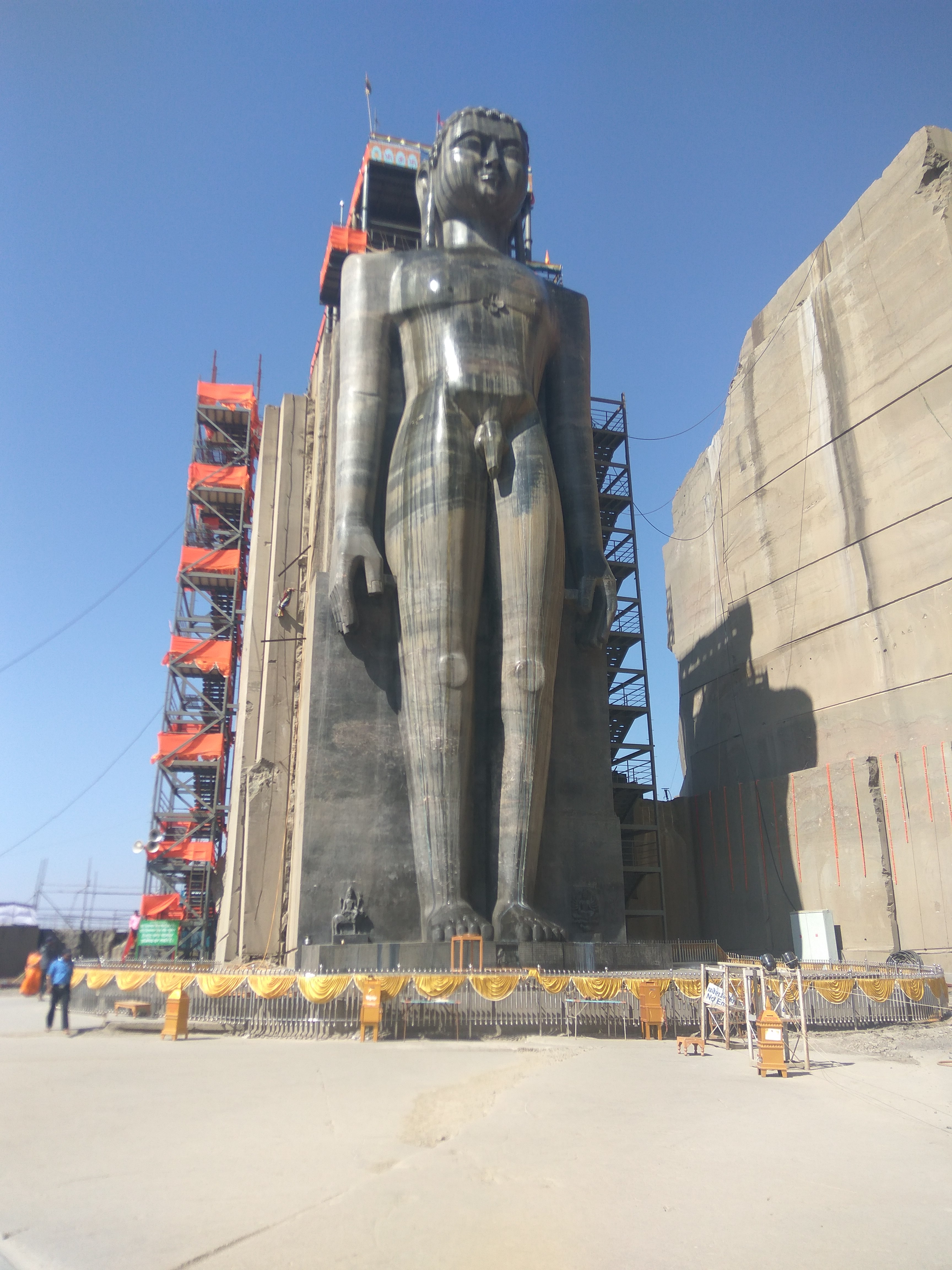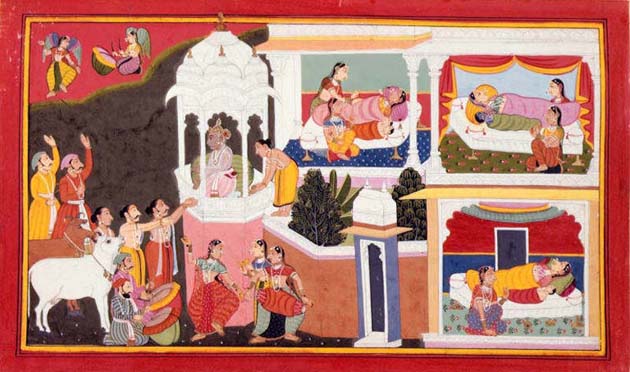|
Kusumagraj
Vishnū Vāman Shirwādkar (27 February 1912 – 10 March 1999), popularly known by his pen name, Kusumāgraj, was an Marathi poet, playwright, novelist and short story writer, who wrote of freedom, justice and emancipation of the deprived, In a career spanning five decades starting in India's pre-independence era, he wrote 16 volumes of poems, three novels, eight volumes of short stories, seven volumes of essays, 18 plays and six one-act plays. His works like the ''Vishakha'' (1942), a collection of lyrics, inspired a generation into the Indian freedom movement, and is today considered one of the masterpieces of Indian literature. He was the recipient of the 1974 Sahitya Akademi Award in Marathi for ''Natsamrat'', Padma Bhushan (1991) and the Jnanapith Award in 1987; He also served as the President of the Akhil Bharatiya Marathi Sahitya Sammelan held at Margao in 1964. Early life and education Kusumagraj was born into a Deshastha Brahmin family on 27 February 1912 ... [...More Info...] [...Related Items...] OR: [Wikipedia] [Google] [Baidu] |
Marathi Language
Marathi (; ''Marāṭhī'', ) is an Indo-Aryan languages, Indo-Aryan language predominantly spoken by Marathi people in the Indian state of Maharashtra. It is the official language of Maharashtra, and additional official language in the state of Goa. It is one of the 22 scheduled languages of India, with 83 million speakers as of 2011. Marathi ranks 11th in the List of languages by number of native speakers, list of languages with most native speakers in the world. Marathi has the List of languages by number of native speakers in India, third largest number of native speakers in India, after Hindi Language, Hindi and Bengali language, Bengali. The language has some of the oldest literature of all modern Indian languages. The major dialects of Marathi are Standard Marathi and the Varhadi dialect. Marathi distinguishes Clusivity, inclusive and exclusive forms of 'we' and possesses a three-way Grammatical gender, gender system, that features the neuter in addition to the masculine ... [...More Info...] [...Related Items...] OR: [Wikipedia] [Google] [Baidu] |
Indian Literature
Indian literature refers to the literature produced on the Indian subcontinent until 1947 and in the Republic of India thereafter. The Republic of India has 22 officially recognised languages. The earliest works of Indian literature were orally transmitted. Sanskrit literature begins with the oral literature of the Rig Veda, a collection of literature dating to the period 1500–1200 BCE. The Sanskrit epics ''Ramayana'' and ''Mahabharata'' were subsequently codified and appeared towards the end of the 2nd millennium BCE. Classical Sanskrit literature developed rapidly during the first few centuries of the first millennium BCE, as did the Pāli Canon and Tamil Sangam literature. In the medieval period, literature in Kannada and Telugu appeared in the 9th and 10th centuries respectively. Later, literature in Marathi, Gujarati, Bengali, Assamese, Odia, and Maithili appeared. Thereafter literature in various dialects of Hindi, Persian and Urdu began to appear as well. In 1 ... [...More Info...] [...Related Items...] OR: [Wikipedia] [Google] [Baidu] |
Jnanapith Award
The Jnanpith Award is the oldest and the highest Indian literary award presented annually by the Bharatiya Jnanpith to an author for their "outstanding contribution towards literature". Instituted in 1961, the award is bestowed only on Indian writers writing in Indian languages included in the Eighth Schedule to the Constitution of India and English, with no posthumous conferral. From 1965 till 1981, the award was given to the authors for their "most outstanding work" and consisted of a citation plaque, a cash prize and a bronze replica of Saraswati, the Hindu goddess of knowledge and wisdom. The first recipient of the award was the Malayalam writer G. Sankara Kurup who received the award in 1965 for his collection of poems, Odakkuzhal (''The Bamboo Flute''), published in 1950. The rules were revised in subsequent years to consider only works published during the preceding twenty years, excluding the year for which the award was to be given and the cash prize was increased to ... [...More Info...] [...Related Items...] OR: [Wikipedia] [Google] [Baidu] |
Maharashtra
Maharashtra (; , abbr. MH or Maha) is a states and union territories of India, state in the western India, western peninsular region of India occupying a substantial portion of the Deccan Plateau. Maharashtra is the List of states and union territories of India by population, second-most populous state in India and the second-most populous country subdivision globally. It was formed on 1 May 1960 by splitting the bilingual Bombay State, which had existed since 1956, into majority Marathi language, Marathi-speaking Maharashtra and Gujarati language, Gujarati-speaking Gujarat. Maharashtra is home to the Marathi people, the predominant ethno-linguistic group, who speak the Marathi language, Marathi language, the official language of the state. The state is divided into 6 Divisions of Maharashtra, divisions and 36 List of districts of Maharashtra, districts, with the state capital being Mumbai, the List of million-plus urban agglomerations in India, most populous urban area in India ... [...More Info...] [...Related Items...] OR: [Wikipedia] [Google] [Baidu] |
Sriram Lagoo
Dr.Shriram Lagoo (16 November 1927 – 17 December 2019) was an Indian film and theatre actor, in Hindi and Marathi, in addition to being an ENT Surgeon. He was known for his character roles in films. He acted in over 250 films including Hindi and Marathi films as well as Hindi, Marathi and Gujarati plays, and directed over 20 Marathi plays. He was also very vocal and active in furthering progressive and rational social causes, for example in 1999, he and social activist G. P. Pradhan undertook a fast in support of anti-corruption crusader Anna Hazare. He won the 1978 Filmfare Award for Best Supporting Actor for the Hindi film ''Gharaonda''. His autobiography is titled ''Lamaan'' (), which means "the carrier of goods". Early life Shreeram Lagoo was born in Satara district, Maharashtra, India to Balakrishna Chintaman Lagoo and Satyabhama Lagoo, and was the eldest of four children. He attended Bhave High School, Fergusson College (University of Pune) and B. J. Medical College ... [...More Info...] [...Related Items...] OR: [Wikipedia] [Google] [Baidu] |
Jnanpith Award
The Jnanpith Award is the oldest and the highest Indian literary award presented annually by the Bharatiya Jnanpith to an author for their "outstanding contribution towards literature". Instituted in 1961, the award is bestowed only on Indian writers writing in Indian languages included in the Eighth Schedule to the Constitution of India and English, with no posthumous conferral. From 1965 till 1981, the award was given to the authors for their "most outstanding work" and consisted of a citation plaque, a cash prize and a bronze replica of Saraswati, the Hindu goddess of knowledge and wisdom. The first recipient of the award was the Malayalam writer G. Sankara Kurup who received the award in 1965 for his collection of poems, Odakkuzhal (Poetry), Odakkuzhal (''The Bamboo Flute''), published in 1950. The rules were revised in subsequent years to consider only works published during the preceding twenty years, excluding the year for which the award was to be given and the cash priz ... [...More Info...] [...Related Items...] OR: [Wikipedia] [Google] [Baidu] |
Margao
Margao or Madgaon is the commercial capital of the Indian state of Goa. It stands on banks of the Sal river and is the administrative headquarters of Salcete sub-district and South Goa district. It is Goa's second largest city by population after Vasco. Etymology ''Margão'' is the Portuguese spelling, with (''Madgao'') being used in Konkani. The etymology of the name has been debated, with theories ranging from the name having evolved from the pre-colonial Mahargao (“village of Mahars”, a large community of weavers) to being derived from the Sanskrit (''Maṭhagrāma'') which means "a village of monasteries" owing to the shrines of Matsyendranath and Gorakhnath in ''Ravanphond'', now a suburb of Margao. Alternatively Margão may be derived from Mharuganv, “village of demons”, or Maravile, Portuguese for “marvellous village.” History Margao in pre-Portuguese times was one of the important settlements in Salcete and known as ''Matha Grama'' (the village of M ... [...More Info...] [...Related Items...] OR: [Wikipedia] [Google] [Baidu] |
Akhil Bharatiya Marathi Sahitya Sammelan
Akhil Bharatiya Marathi Sahitya Sammelan (All India Marathi Literary Conference) is an annual conference for literary discussions by Marathi writers. Marathi is the official language of Maharashtra State. The first Marathi Sahitya Sammelan was held in Pune Pune (; ; also known as Poona, (List of renamed Indian cities and states#Maharashtra, the official name from 1818 until 1978) is one of the most important industrial and educational hubs of India, with an estimated population of 7.4 million ... in 1878 under the chairmanship of Justice Mahadev Govind Ranade. Conferences held Following is the list of the conferences with year and venue: Women presidents Only five women have been the presidents of the Sammelan to date: References {{DEFAULTSORT:Sahitya Sammelan, Akhil Bharatiya Marathi Marathi-language writers Culture of Maharashtra Indic literature societies ... [...More Info...] [...Related Items...] OR: [Wikipedia] [Google] [Baidu] |
Nasik
Nashik (, Marathi: aːʃik, also called as Nasik ) is a city in the northern region of the Indian state of Maharashtra. Situated on the banks of river Godavari, Nashik is the third largest city in Maharashtra, after Mumbai and Pune. Nashik is well known for being one of the Hindu pilgrimage sites of the Kumbh Mela, which is held every 12 years. Nashik is located about 190 km north of state capital Mumbai. The city is called the "Wine Capital of India" as more than half of India's vineyards and wineries are located here. Around 90% of all Indian wine comes from the Nashik Valley. Nashik is one of the fastest-growing cities in India. It has been a major industrial center in automobile hub. The city houses companies like Exxelia, Atlas Copco, Robert Bosch GmbH, CEAT Limited, Crompton Greaves, Graphite India, ThyssenKrupp, Epcos, Everest Industries, Gabriel India, GlaxoSmithKline, Hindustan Coca-Cola, Hindustan Unilever Limited, Jindal Polyster, Jyoti Structures, Kirloske ... [...More Info...] [...Related Items...] OR: [Wikipedia] [Google] [Baidu] |
Nashik
Nashik (, Marathi: aːʃik, also called as Nasik ) is a city in the northern region of the Indian state of Maharashtra. Situated on the banks of river Godavari, Nashik is the third largest city in Maharashtra, after Mumbai and Pune. Nashik is well known for being one of the Hindu pilgrimage sites of the Kumbh Mela, which is held every 12 years. Nashik is located about 190 km north of state capital Mumbai. The city is called the "Wine Capital of India" as more than half of India's vineyards and wineries are located here. Around 90% of all Indian wine comes from the Nashik Valley. Nashik is one of the fastest-growing cities in India. It has been a major industrial center in automobile hub. The city houses companies like Exxelia, Atlas Copco, Robert Bosch GmbH, CEAT Limited, Crompton Greaves, Graphite India, ThyssenKrupp, Epcos, Everest Industries, Gabriel India, GlaxoSmithKline, Hindustan Coca-Cola, Hindustan Unilever Limited, Jindal Polyster, Jyoti Structures, Kirl ... [...More Info...] [...Related Items...] OR: [Wikipedia] [Google] [Baidu] |
Lakshmana
Lakshmana ( sa, लक्ष्मण, lit=the fortunate one, translit=Lakṣmaṇa), also spelled as Laxmana, is the younger brother of Rama and his loyalist in the Hindu epic ''Ramayana''. He bears the epithets of Saumitra () and Ramanuja (). He is the twin of Shatrughna. Legend Birth and marriage King Dasharatha of Ayodhya had three wives: Kausalya, Kaikeyi, and Sumitra. He performed a sacrifice to beget sons and as a result, his queens became pregnant. Lakshmana and his brother Shatrughna were born to Sumitra, while Rama and Bharata were born to Kausalya and Kaikeyi. In the Puranas, Lakshmana is described as an incarnation of Shesha, the multiple-headed naga (serpent) upon whom rests the preserver deity Vishnu, whose avatar Rama is considered to be. When sage Vishvamitra asked Rama to kill the demons in the forest, Lakshmana accompanied them and went to Mithila with them. Lakshmana was especially attached to Rama. When Rama married Sita, Lakshmana married Sita's ... [...More Info...] [...Related Items...] OR: [Wikipedia] [Google] [Baidu] |
Shakespeare
William Shakespeare ( 26 April 1564 – 23 April 1616) was an English playwright, poet and actor. He is widely regarded as the greatest writer in the English language and the world's pre-eminent dramatist. He is often called England's national poet and the " Bard of Avon" (or simply "the Bard"). His extant works, including collaborations, consist of some 39 plays, 154 sonnets, three long narrative poems, and a few other verses, some of uncertain authorship. His plays have been translated into every major living language and are performed more often than those of any other playwright. He remains arguably the most influential writer in the English language, and his works continue to be studied and reinterpreted. Shakespeare was born and raised in Stratford-upon-Avon, Warwickshire. At the age of 18, he married Anne Hathaway, with whom he had three children: Susanna Hall, Susanna, and twins Hamnet Shakespeare, Hamnet and Judith Quiney, Judith. Sometime between 1585 and 1592, ... [...More Info...] [...Related Items...] OR: [Wikipedia] [Google] [Baidu] |








